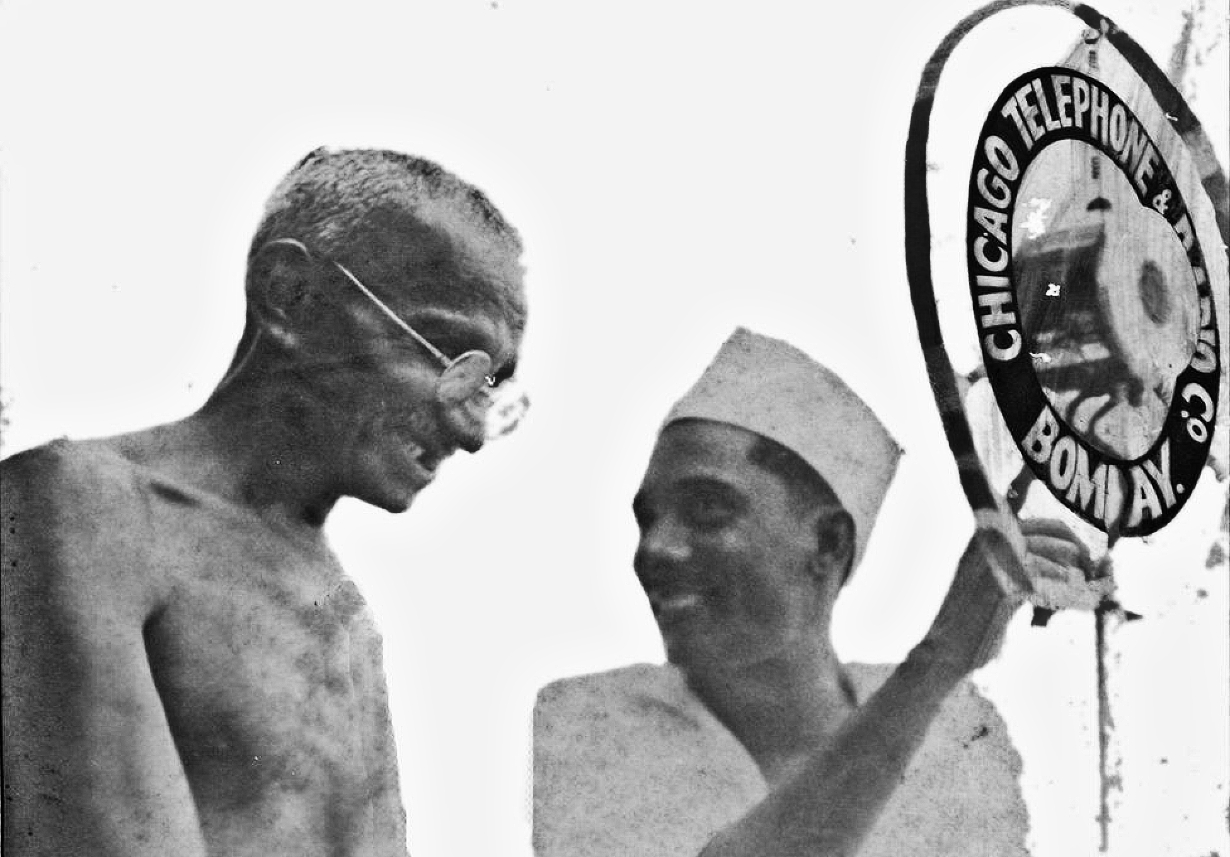One eight-year-old girl from Saras village in Gujarat, Usha Mehta, was among the youngest protesters at the protest march of the Independence movement in 1928.
She shouted, “Simon, Go Back,” and hurled the first brick at the British Raj complex.
Years later, she became the voice of an underground radio channel that played a small but instrumental role in reaching out to people in their struggle for India’s independence from the British Raj.
When Mahatma Gandhi launched the Quit India Movement in August 1942 at the Bombay session of the All-India Congress Committee, a young college student, Usha, was in the crowd and took Gandhi’s motto to heart.
Just five days later, her voice was heard on the radio, reverberating in the minds of millions of people clamoring for independence. In those days, the All India Radio, officially known as “Akashvani” since 1957, was a government mouthpiece of the colonizers.
“This is the Congress Radio calling on 42.34 meters from somewhere in India,” Usha Mehta’s voice rang rebellious and clear to the entire country on a ghost transmitter.
Risking it all for the country, Usha and her co-revolutionaries filled the airwaves with the sound of revolution.
The hush-hush station — Congress Radio — broadcast recorded messages from Gandhi and other leaders to the followers of the freedom struggle. The radio station moved places to dodge authorities and fought British propaganda and disinformation.
The young radio revolutionaries were caught after a three-month-long game of cat and mouse and were arrested and imprisoned the same year.
India today marks 75 years of independence, a struggle fought with the blood and sweat of millions of people across the country and overseas. Just as the tale of freedom is incomplete without the freedom fighters and revolutionaries, it is only half told without highlighting the role of radio and sound systems in the movement – the only few channels of communicating to the masses in those days.
Chicago Radio – India’s Voice Of Freedom
Nanik Motwane, a young Indian National Congress Party volunteer, watched Mahatma Gandhi struggling to make his voice heard at large public gatherings for independence in 1929.
Gandhi would walk from platform to platform at the same location and repeat the speech in his faint voice to hundreds of thousands of people gathered to listen to their leader. That’s when Motwane had a revelation.
The 27-year-old decided to amplify the voice of the national hero. Two years later, Motwane was ready with a public address system at a Congress rally in Karachi, a vibrant city in present-day Pakistan.

In one of the earliest photographs, Motwane is seen wearing the trademark white Gandhi cap with Gandhi standing next to him, speaking on a microphone with “Chicago Radio” branding.
For a business founded in Bombay, Chicago Radio was a rather curious name. Perhaps the Motwane family was fascinated with a foreign name, given their global business networks.
During the early days of business, Motwane imported loudspeakers, amplifiers, and microphones from the US and UK, and the engineers in India reverse engineered them for local use.
As they kept improvising and strengthening the sound system, at one point, Motwane had 100 public-address sets ready all over India to rush to any Congress meeting.
Motwane also helped run a clandestine radio station, the Congress Radio or AIR, “anti-India radio,” as the imperialists would call it. He was among the five people arrested, along with Usha Mehta, the voice of Congress Radio.
Motwane was held for allegedly helping the station with equipment and technical assistance. Interestingly, Chicago Radio was never on the police’s radar.
The name Chicago Radio became synonymous with public gatherings and was used in meetings or when foreign officials would come to India.
In 1963, the late Lata Mangeshkar sang Aye Mere Watan Ke Logon (Ye People of my Land), an ode to fallen soldiers, beaming from Chicago Radio speakers to a teary-eyed audience.
However, when Indira Gandhi came to power in the 1970s, her office wrote a stern letter asking Motwane to change the foreign brand name. But Motwane resisted. Chicago Radio is still around but much smaller in reach. The firm now sells public address and intercom systems.
The Azad Hind Radio In Germany
After setting up Free India Center In Berlin, Netaji Subhas Chandra Bose started Azad Hind Radio as part of Germany’s radio service, which first aired on January 7, 1942.
The programs of the German-funded operation were meant to show solidarity with Indians living abroad, as well as those still living in the subcontinent. Broadcasting from Germany, Bose celebrated Japanese victories over the British and passionately spoke about India’s Quit India movement.
Netaji used the radio to declare war against the British on October 23, 1942.
When India gained independence from the British, Poornam Vishwanathan cleared his throat, held back his emotions, and announced India’s freedom to the outside world in a radio broadcast.
It was 5.30 in the morning of August 15, 1947, when a young Vishwanathan became the first Indian to broadcast from India to East Asia. “India is a free country,” was the first sentence. This was followed by repeating Nehru’s Tryst with destiny speech.
- Reach out to the author at sengar.shweta20@gmail.com
- Follow EurAsian Times on Google News




